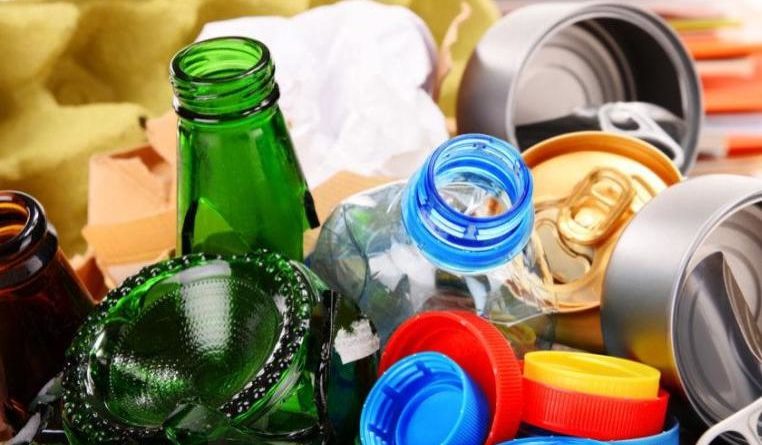Written by Andrés Alonso Quintanilla
In October 2018, ennomotive launched an innovation challenge to find an alternative solution to lime to dry wet soil in road construction works.
For 6 weeks, 54 engineers from 30 countries accepted the challenge and submitted different solutions. After a thorough evaluation, the solutions that best met the evaluation criteria were submitted by Jesús Del Val, from Spain, and Andrés Alonso Quintanilla, also from Spain.
In this article, Andrés talks about the importance of recycling as global coordinated action and how it can be improved.
Introduction
Sometimes, a particular word acquires a sudden importance in our everyday vocabulary and it stick around forever. That is the case of recycling and all its associated terms. Actually, humans have tried to re use objects and products for a long time now, e.g. stones used in walls and bridges were re used in houses, streets or pits, and the slurry from stables was later used to fertilize crops.
Today, the need to recycle has increased dramatically due to the room materials take up, their polluting effects and their potential future scarcity.
Recycling: a Necessary Global Action
If we take the most simple recycled element, water, the situation changes from one country to another. There have been many achievements accomplished in the last two centuries regarding water reutilization but we are still far from the goal. It is still not possible to ensure that one person will obtain 35 litres of drinkable water a day.
Compared to water, the remaining elements are in a very primitive stage regarding recyling. Only the UN statements and the actions taken by the EU have raised awareness about the alarming consumption of raw materials and the subsequent negative environmental impact.
However, this information has been absorbed by audiences in countries with a high-consumption level and ignored by countries with alarming poverty rates. For this reason, the recycling actions undertaken by the first group of countries have limited effects.
Take as an example the legislation and political initiatives to reduce the use of plastics in Western regions that share the common use of the oceans with countries where such legislation is non-existent. Like it or not, in this globalized world, big rivers and seas act as waste collectors and the currents move such waste around cyclically.
We are witnessing the seasonal arrival of a sea of plastics to touristic beaches in Caribbean countries. Other countries ship away their plastic waste, generally to developing countries, to eliminate it outside their borders. Recycling at a global scale comes from the need to limit the waste, leaving behind the economic aspect of repurposing.
Recycling in Spain: Some Data and Actions to be Taken
If we take a look at Spain, what is the situation there? In Spain, 21.5 million tons of domestic waste and 50 million industrial waste is produced every year. Due to EU regulations, member states need to recycle 50% of the waste by 2020, 55% by 2025, 60% by 2030 and 65% by 2035.
These two types of waste have different recycling channels. Domestic waste is recycled through publicly managed organisms while industrial waste is managed through the producing company or private industrial waste management companies.
Despite it amounts to half the industrial waste, the media and political focus is on the domestic waste. In Spain, only a 31% of domestic waste is recycled, almost 4 million packages and 3,3 million organic waste. The rest ends up in a landfill (11.6 millions) or cremated (2.5 millions). This situation is going to come to and end due to EU directives. Recycling 50% of the Spanish domestic waste would mean to recycle 3.35 million tons more.
What are some potential solutions? Increasing the organic waste collection would only be possible in the generation spots, which are already doing a good job for the past years. Doing and intensive domestic waste collection will not have a great impact either since the food consumption patterns in big cities are changing and the organic domestic waste is decreasing.
Reducing Non-Recyclable Materials in Packaging is Key
Where can we act more efficiently, then? Possibly focusing on the packaging and the repurposing of textile waste. Today, packaging is part of the marketing culture of a company, of the acceptance of the customers, of the protection and preservation of the products and even of the transportation. Manufacturers pay almost the entirety of the recycling or collection of the packaging, which is previously levied on the product on sale. In the case of Spain, the cost of recycling the packaging is 550 million euros per year, and only 55 million are recovered by the companies.
When we buy any product, it is clearly noticeable that the packing is like an Egyptian pyramid that contains the pharaoh buried inside: we must go through three or more paper, cardboard and plastic walls of packaging to get to the actual product. However, we can act on this, we can reduce the number of layers in the packaging and replace non-recyclable elements with paper, cardboard or vegetal-fiber materials. Today, there are many types of vegetal fibers that can replace plastics.
In this field, research and development can be aimed to physically reduce the packaging or replace some elements by other that are more easily reciclable or collectable. In this sense, there is a method in which the consumer gets directly paid for recycling. In some countries, recycling has increased due to the fact that the very consumer gets part of the money of the previously-purchased product by recycling the packaging.
Tell us other ways to improve recycling globally and
explore what ennomotive has to offer.
Join our community of engineers 